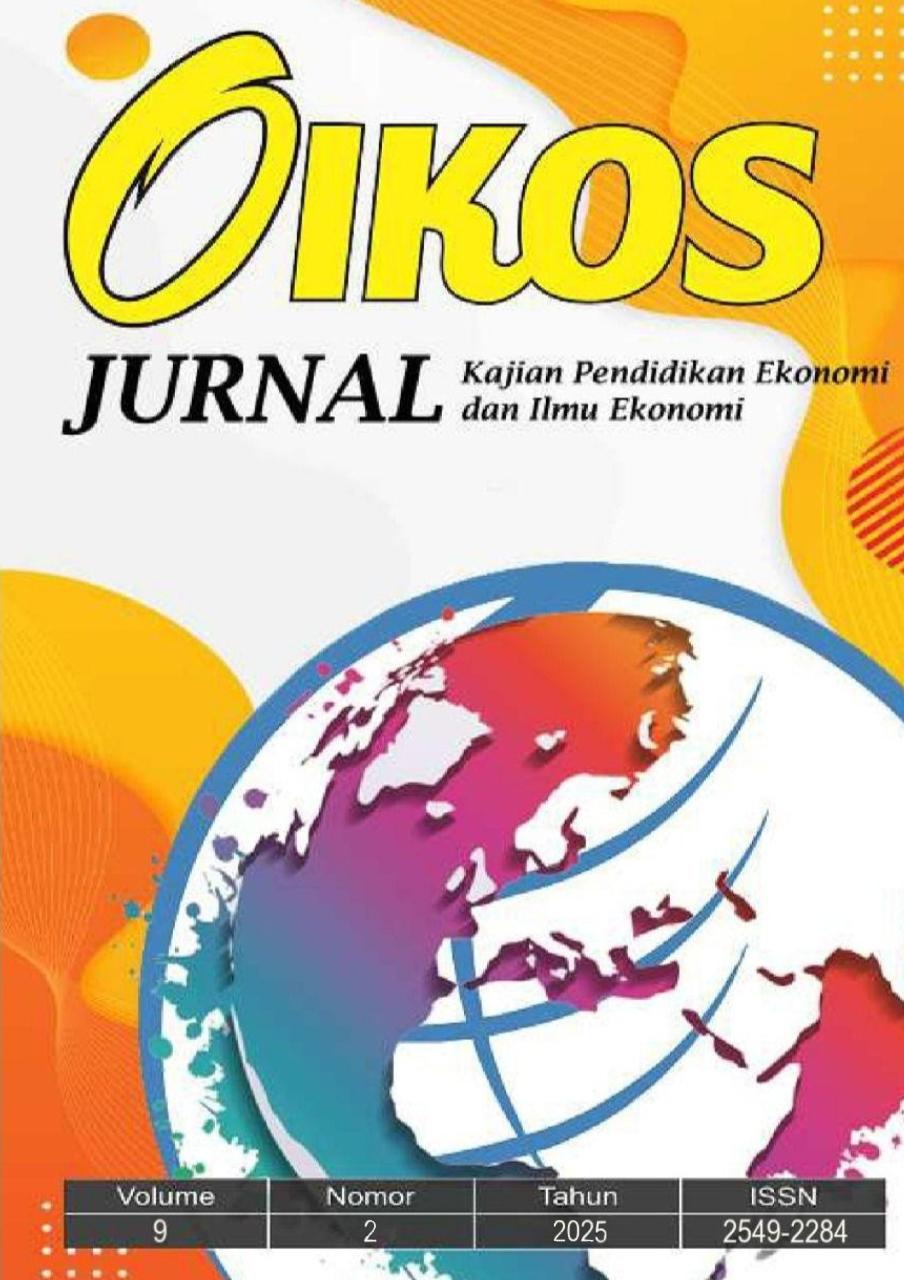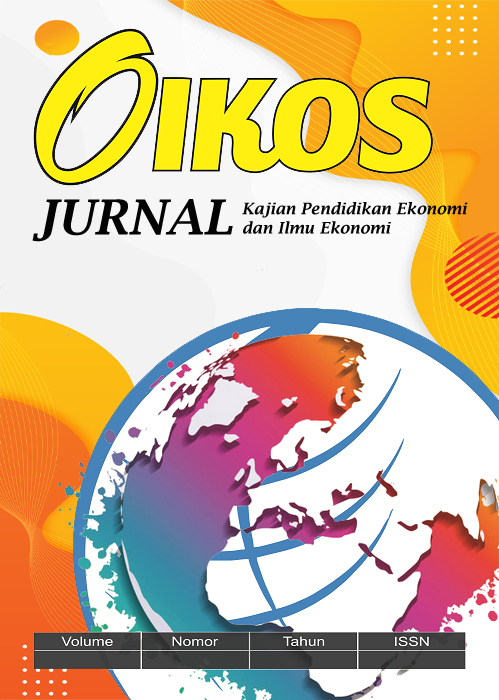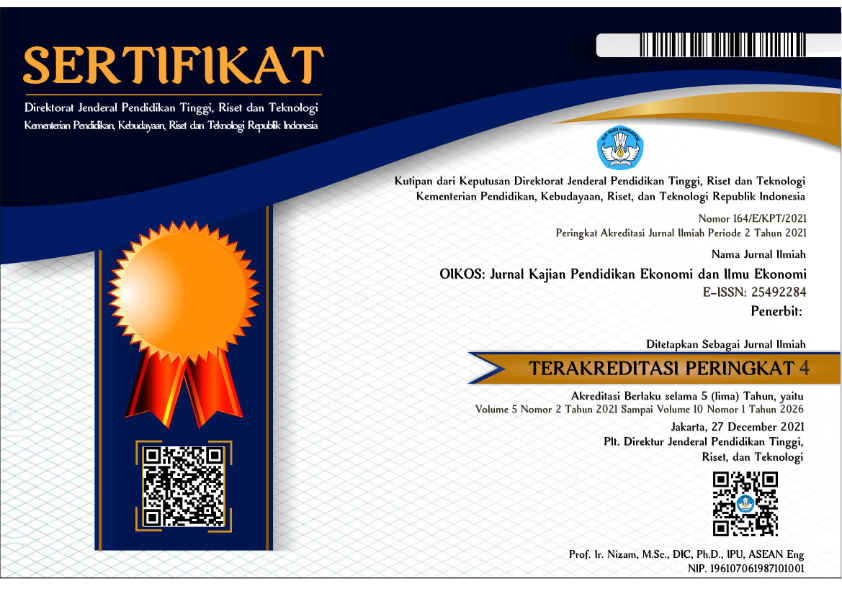Retail Strategy Adaptation across B2B and B2C segments: Evidence from Indonesian Frozen Food Retailers
Keywords:
Customer Loyalty, value chain, retail, competitive advantage, Customer Satisfaction, Price, Consumer Satisfaction, and Customer Loyalty.Abstract
As frozen food retailers in Indonesia face mounting pressure from both economic challenges and competitive alternatives, strategic adaptation across different customer segments becomes increasingly essential. This research investigates the adaptive strategies of “FrozenMart” in addressing foot traffic fluctuations and enhancing customer engagement in both B2B and B2C markets. A mixed-methods approach was employed, including quantitative surveys across 10 branches (n=300) and qualitative inputs from stakeholders. The study explores product display preferences, promotional effectiveness, and membership adoption using descriptive statistics, importance-performance analysis (IPA), and K-Means clustering. Financial simulations were conducted using ROI, CPA, BEP, NPV, and IRR to assess strategic viability. Findings reveal a strong preference among B2C customers for categorized product displays and direct discount schemes. Although only 23.7% are members, over 90% acknowledge membership influence on purchasing behavior. B2B respondents emphasized the importance of delivery services and exclusive pricing. Hybrid strategies—bundling, segmented membership, and localized events—showed the highest ROI and consumer retention potential. The study highlights that personalized experience and localized engagement are key to sustaining competitiveness in Indonesia’s frozen food retail landscape.
Downloads
References
Bruckberger, G., Fuchs, C., Schreier, M., & Van Osselaer, S.M.J. (2023).
Retailing groundedness: How to improve customer experience, brand perceptions, and customer loyalty through feelings of groundedness. *Journal of Retailing*, 99, 594–604. https://doi.org/10.1016/j.jretai.2023.11.004
Goldman, A. (2001). The transfer of retail formats into developing economies: The example of China. *Journal of Retailing*, 77(2), 221–242. https://doi.org/10.1016/S0022-4359(01)00044-6
Guo, W., Tian, J., & Li, M. (2025). Reputation vs. price: Sequential recommendations based on cue diagnosticity theory. *Journal of Retailing and Consumer Services*, 83, 104157.
https://doi.org/10.1016/j.jretconser.2024.104157
Kelemen-Erdős, A., Mitev, A., & Szakály, Z. (2024). Retain or reduce? Delisting decisions in relation to manufacturer-retailer relationships in grocery store retailing. *Periodica Polytechnica Social and Management Sciences*, 32(2), 131–140. https://doi.org/10.3311/PPso.21528
Kopalle, P., Biswas, D., Chintagunta, P.K., Fan, J., Pauwels, K., Ratchford, B.T., & Sills, J.A. (2009). Retailer pricing and competitive effects. *Journal of Retailing*, 85(1), 56–70. https://doi.org/10.1016/j.jretai.2008.11.005
Pappu, R., & Quester, P.G. (2006). A consumer-based method for retailer equity measurement: Results of an empirical study. *Journal of Retailing and Consumer Services*, 13(4), 317–329. https://doi.org/10.1016/j.jretconser.2005.10.002
Puccinelli, N.M., Goodstein, R.C., Grewal, D., Price, R., Raghubir, P., & Stewart,
D. (2009). Customer experience management in retailing: Understanding the buying process. *Journal of Retailing*, 85(1), 15–30. https://doi.org/10.1016/j.jretai.2008.11.003
Sorensen, H., Bogomolova, S., Anderson, K., Trinh, G., Sharp, A., Kennedy, R., Page, B., & Wright, M. (2017). Fundamental patterns of in-store shopper behavior. *Journal of Retailing and Consumer Services*, 37, 182–194. https://doi.org/10.1016/j.jretconser.2017.02.003
Verhoef, P.C., Lemon, K.N., Parasuraman, A., Roggeveen, A., Tsiros, M., & Schlesinger, L.A. (2009). Customer experience creation: Determinants, dynamics and management strategies. *Journal of Retailing*, 85(1), 31–41. https://doi.org/10.1016/j.jretai.2008.11.001
Belwal, R., Belwal, S., Morgan, Z., & Al Badi, L.H. (2025). Profiling consumers for their shopping motivations in modern retail formats in Oman.
*International Journal of Retail & Distribution Management*, 53(1), 74–93. https://doi.org/10.1108/IJRDM-09-2023-0581
Ailawadi, K.L. & Keller, K.L. (2004). Understanding retail branding: Conceptual insights and research priorities. *Journal of Retailing*, 80(4), 331–342. https://doi.org/10.1016/j.jretai.2004.10.008
Huddleston, P., Whipple, J., Mattick, R.N., & Lee, S.J. (2009). Customer satisfaction in food retailing: Comparing specialty and conventional grocery stores. *International Journal of Retail & Distribution Management*, 37(1), 63–80. https://doi.org/10.1108/09590550910927162Lotfizadeh, F. & Lotfizadeh, F. (2015). Comparing high-involvement and low- involvement products: Brand perspective. *International Journal of Management, Accounting and Economics*, 2(5), 404–413. http://www.ijmae.com/
Macdonald, E.K. & Sharp, B. (2000). Brand awareness effects on consumer decision making for a common, repeat purchase product: A replication.
*Journal of Business Research*, 48(1), 5–15. https://doi.org/10.1016/S0148- 2963(98)00070-8
Mittal, K.C., Prashar, A., & Mittal, E. (2011). A study on impact of demographics on buying behavior of food and grocery consumers in Punjab. *Journal of Business and Retail Management Research*, 5(2), 81–90. https://www.jbrmr.com/
Sirohi, N., McLaughlin, E.W., & Wittink, D.R. (1998). A model of consumer perceptions and store loyalty intentions for a supermarket retailer. *Journal of Retailing*, 74(2), 223–245. https://doi.org/10.1016/S0022-
4359(99)80094-3
Tian, X., Tang, J., & Zhou, Y. (2024). Impact of promotion design on retail operating performance: Evidence from Chinese chain retailers. *Electronic Commerce Research*. https://doi.org/10.1007/s10660-024-09805-w
Wang, F., Chen, C., Xiu, C., & Zhang, P. (2014). Location analysis of retail stores in Changchun, China: A street centrality perspective. *Cities*, 41, 54–63. https://doi.org/10.1016/j.cities.2014.05.005
Weinandy, T.J., Chen, K., Pozo, S., & Ryan, M.J. (2023). Twitter-patter: How social media drives foot traffic to retail stores. *Journal of Marketing Analytics*, 12(6), 551–569. https://doi.org/10.1057/s41270-023-00209-7
Garrido-Morgado, Á., González-Benito, Ó., Martos-Partal, M., & Campo, K. (2021). Which products are more responsive to in-store displays: Utilitarian or hedonic? *Journal of Retailing*, 97(3), 477–491. https://doi.org/10.1016/j.jretai.2020.10.005
Downloads
Published
Versions
- 2025-08-08 (2)
- 2025-07-31 (1)
Issue
Section
License
Copyright (c) 2025 OIKOS: Jurnal Kajian Pendidikan Ekonomi dan Ilmu Ekonomi

This work is licensed under a Creative Commons Attribution 4.0 International License.









